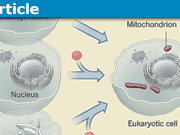How to Become a Medical Physicist in 3653 Easy Steps
For many physics students, Medical Physics is that branch of the discipline that seems to hover in the no-man’s land between academia and “industry.” It’s not as glamorous or fundamental as some of the other branches that may have originally drawn students into physics in the first place. It didn’t get a chapter in Hawking’s “A Brief History of Time” or an episode of Sagan’s “Cosmos” or Tyson’s recent reboot. But it comes with a lot of pragmatic appeals – particularly when one begins to think about translating an education in physics into a career. The median salary for a Medical Physicist in the US is in the ballpark of USD 190,000 for PhDs with board certification. And the work will genuinely make a difference in people’s lives.
It’s a decent gig if you can get it.
Here, I hope to offer some insight based on my own experience to students or recent graduates curious about Medical Physics careers.
Table of Contents
What is Medical Physics?
Medical Physics is the branch of physics that applies to solving problems in medicine – problems regarding how various forms of electromagnetic and particulate radiation interact with the human body, development of imaging devices, optimization theory, modeling biological responses to treatment or disease kinetics, etc. are all examples. In that sense, there is a lot of research in physics and in engineering, mathematics, chemistry, and biology that could qualify as “Medical Physics.”
I’ll largely be focusing on clinical Medical Physics though. By that, I mean the practice of physics in the professional provision of clinical services.
Radiation Oncology Physicists
Roughly 80% of Medical Physicists work in the field of radiation oncology – the application of radiation for the treatment of cancer (and a few other types of diseases). This work has many dimensions, which is why sometimes it can be difficult to get a straight answer on what a Medical Physicist does. It’s important to underscore that although patients may not see a Medical Physicist as often as they would a physician or a nurse, nearly all the work a Medical Physicist does has a direct impact on patient care. Broadly speaking, the work of a clinical radiation oncology physicist involves:
- establishing, supervising, and executing a quality assurance program for the devices used to deliver radiation and their supporting systems (linear accelerators, brachytherapy after loaders, image guidance systems, proton or heavy ion accelerators, CT simulators, MRI simulators, etc.)
- commissioning of new radiation treatment devices, facilities, and their supporting systems as they are introduced into clinics
- administration of the computer networks and software used to run the radiation delivery machines and generate treatment plans
- responsibility for the integrity of radiation therapy treatment plans (which can take the form of plan checking, consulting on difficult, abnormal or new modality plans, and in some cases planning treatments)
- developing and updating procedures for radiation therapy treatment, and providing technical guidance for administrative decisions
- investigating clinical problems (everything from calculating the dosimetric consequences of a treatment error to computer network slowness to chasing down the source of an asymmetry in a treatment beam)
- leading clinical investigations or projects (examples include measuring how accurate your treatment planning system is at calculating dose in the presence of prosthetic hips, or investigating the clinical consequences of delivering radiation at a faster dose rate)
Diagnostic Imaging, MRI, and Nuclear Medicine
The other roughly 20% of Clinical Medical Physicists work in diagnostic imaging, MRI (MRI is its specialty), and nuclear medicine. I won’t go into as much detail concerning these sub-specialties, but conceptually much of the work is similar and again, has a direct impact on patient care. These sub-disciplines involve commissioning new imaging devices, establishing and maintaining quality assurance testing, network administration, clinical problem solving, consulting, administration, and clinical research. In the imaging specialties, the focus of the commissioning and quality assurance work is to provide the optimum image quality for the best possible diagnoses while balancing that with the safe delivery of radiation and minimizing unnecessary exposure.
Radiation Safety
Medical Physicists (from all disciplines) often also function as radiation safety officers (RSOs) – dealing with the occupational issues involved with the safe delivery of radiation. This can involve personal dose monitoring, supervising a radiation safety program, teaching, and dealing with all of the licensing (applications, record-keeping, inspections, follow-up actions) involved with operating devices that deliver ionizing radiation. I should note however that RSOs are not always Medical Physicists. There is an entire sub-field called Health Physics that deals specifically with radiation safety. Because of the cross-over between the fields, it’s not uncommon to see Medical Physicists in these roles.
Academics (Teaching and Research)
In addition to clinical duties, many Medical Physicists also have academic appointments at universities and therefore are involved in both teaching and research. I don’t have exact breakdowns, but academic appointments appear to be more common in Canada than in the USA. In the USA, there are more small and independent facilities. Roughly one-fifth of American Medical Physicists are solo practitioners and in such circumstances, academic responsibilities are unlikely. In Canada, cancer centers are all publicly funded and tend to be larger facilities associated with universities, and as such have a mandate to conduct research. According to a recent COMP survey, roughly a quarter of Canadian Medical Physicists’ time is, when averaged out, spent on teaching and research combined (the standard deviation is quite wide in my experience).
Teaching duties can involve instructing medical physics graduate students, medical physics residents, undergraduate physics students, radiation oncology residents, radiation therapy students, medical students, and many others. These can be through formal university courses, laboratories, or semi-formal teaching situations such as in-services.
Medical Physics research is difficult to summarize because there are a very large number of problems in medicine that draw on physics to solve. If you want to get a real idea of what current research involves I would recommend reading the following journals:
- Medical Physics
- Physics in Medicine and Biology
- Journal of Applied Clinical Medical Physics
- Red Journal (International Journal of Radiation Oncology, Biology, Physics)
- Green Journal (Radiotherapy and Oncology)
- International Journal of Radiation Biology
- Radiation Research
There are a lot of other very good journals in the field, and if you’re serious about exploring research in Medical Physics, I suggest starting with one of these and following your nose. If you are an undergraduate student, your library should have a subscription to these journals. If not, many of them provide open access to the more popular articles – editor’s choices, or award winners. Another very good resource that I use to help keep on top of research in the community is the Medical Physics Web. This site provides layperson-friendly summaries of recent publications in the field along with author interviews that can help one learn about the field, which can be especially helpful as you learn a lot of the technical jargon.
The Long Road – Becoming a Medical Physicist
I’ll start at the endpoint, with the term Qualified Medical Physicist. What that usually refers to is a clinical Medical Physicist who has obtained a recognized certification of clinical competence. That certification has more or less become the gateway into the profession. This certification is given by a number of internationally recognized bodies. In North America, these bodies are:
- Canadian College of Physicists in Medicine (CCPM)
- American Board of Radiology (ABR)
- American Board of Medical Physics (ABMP – no longer active)
Technically speaking there are only a handful of states that legally restrict the practice of medical physics to state-licensed Medical Physicists. In most other places in North America, to work as a Medical Physicist, board certification is not technically mandated. But don’t let that allow you to brush off its importance. Any person considering a career in Medical Physics should treat board certification as a mandatory career step because:
(a) in any job competition, those with certification are chosen over those without it,
(b) general trends in all healthcare fields are moving towards increased regulation, and
(c) preparing for certification does make you more competent in the clinic.
To get to board certification, the post-secondary education and training route typically looks something like this:
- Undergraduate Degree in Physics (or a closely related field)
Your undergraduate degree should provide you with a solid foundation in physics. Medical Physics is very much an applied physics field, and in many ways a lot closer to engineering than some other branches of physics. Closely related fields include engineering physics, nuclear engineering, physical chemistry, biomedical engineering, and some (but not all) undergraduate programs that focus specifically on medical or health physics. Competitive GPAs for entry into most graduate programs are in the ballpark of 3.5 on the 4.0 scale. - Graduate Degree in Medical Physics
Graduate programs in Medical Physics combine (in different ways) roughly one year of didactic courses that you need to cover to be competent in the field, a research project, and differing degrees of hands-on experience. At minimum you require a master’s degree for certification, however, due to the competition for residencies, a Ph.D. is often the status quo. It’s not uncommon for students to get the MSc first, attempt to get a residency, and return for the Ph.D. if unsuccessful. Just as in other branches of physics, the Ph.D. has a much larger research project that is expected to be novel. Program accreditation is critical. CAMPEP, the Commission on Accreditation of Medical Physics Education Programs, is a commission set up to ensure consistent quality of education in Medical Physics graduate programs and residencies, and they maintain a list of accredited graduate programs. By 2016, the CCPM will require that applicants for membership have completed either an accredited graduate program or an accredited residency. To write part 1 of the ABR Medical Physics exam, candidates will need to be enrolled in or have graduated from an accredited medical physics program. - Medical Physics Residency
A residency is a 2-3 year position where the resident moves through various clinical rosters (in radiation oncology these would include: machine QA, commissioning, treatment planning, CT simulation, brachytherapy, special techniques, etc.) while working under the supervision of a Qualified Medical Physicist. It is also common for residents to be expected to make substantial contributions to clinical or research projects (which is why the Ph.D. is often preferred for these positions). Again the CCPM will require either the graduate program or the residency to be accredited. In order to write part 2 of the ABR medical physics exam, you need to have completed an accredited residency.
I also have to mention the odds of getting a residency. For the past few years, CAMPEP statistics suggest that about 280 students are graduating from accredited graduate programs. At last count, there were roughly 120 residency positions. This is a major issue in the system right now. There are lots of things you can do to help make sure you get a residency. And the AAPM is working to address the issue on multiple fronts. I suspect that in five years it will be much less of an issue, but the numbers are what they are for the time being. - Other Options – DMP Programs
Another option for students coming out of undergrad is the Doctor of Medical Physics (DMP) program, which roughly combines an MSc with a residency over four years. These are fully accredited programs and offer the guarantee of a residency. My understanding, however, is that the student pays for the residency component, where I feel that residents need to be reimbursed for the valuable work they do for the Medical Physics Department.
Side note: I believe there is currently only one of these programs that are accredited. - Other Options – Physics PhDs from Other Fields
There are also options available for those who have PhDs in other branches of physics who are interested in a professional career in Medical Physics without completing a second Ph.D. The first is obviously to do an accredited two-year MSc. In my experience, a person with a Ph.D. in a different field and an MSc in Medical Physics is seen as equivalent to a candidate with a Ph.D. in Medical Physics in terms of competing for jobs (all other factors being equal). Another option is a post-PhD certificate program (see accredited graduate programs, or University of Calgary ROP), which can be completed in under a year. These essentially allow the Ph.D. to complete the didactic coursework in Medical Physics and are treated as equivalent to having completed a graduate degree in medical physics.
Resources
For details about how the training process works in other parts of the world, I would recommend:
- Institute of Physics and Engineering in Medicine (UK)
- Australasian College of Physical Scientists and Engineers in Medicine
- European Federation of Organisations for Medical Physics
- International Medical Physics Certification Board
- International Organisation of Medical Physics
So there you have it – the good, bad, and ugly about a career in Medical Physics.
“Choppy” works as a senior medical physicist in Alberta, Canada. He received a PhD in medical physics from the University of Alberta in 2005. He has been a Member of the Canadian College of Physicists in Medicine since 2009 and a Fellow since 2014. He is also an Adjunct Assistant Professor at the University of Calgary in both the Department of Oncology and the Department of Physics and Astronomy.








Leave a Reply
Want to join the discussion?Feel free to contribute!